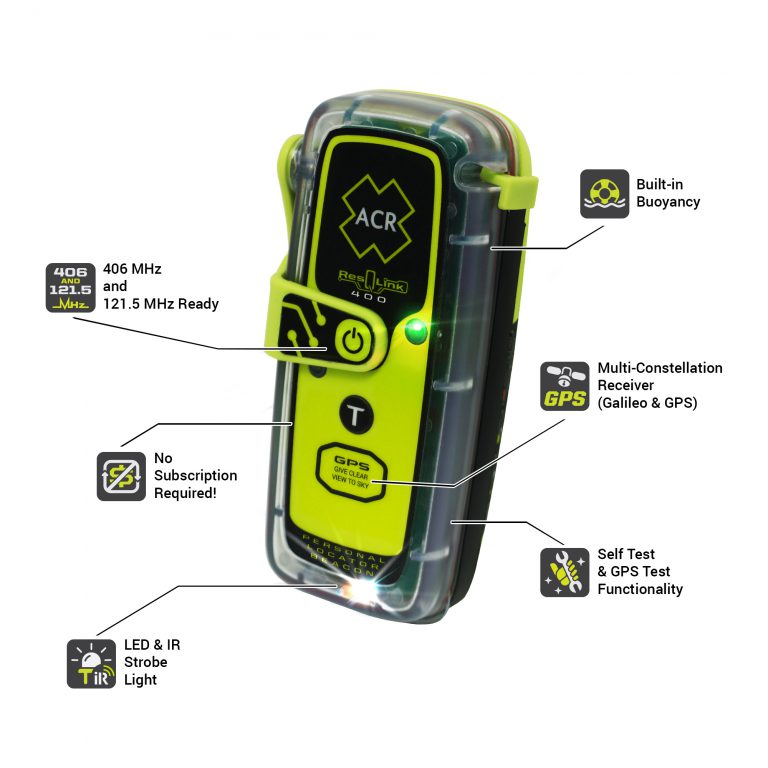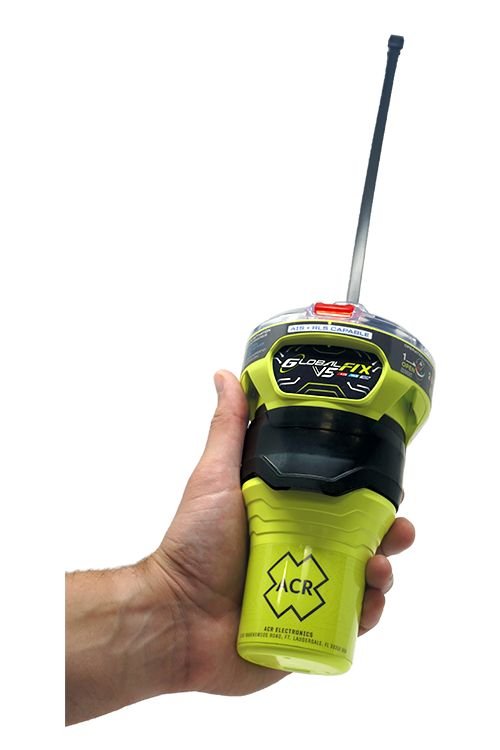EPIRB and PLB


- An EPIRB (Emergency Position Indicating Radio Beacon) is a distress beacon for boaters that when activated alerts a worldwide Search and Rescue (SAR) network designed to send rescuers to your exact location quickly.
- If you purchase a new or used 406 MHz beacon, you must register it with your local government.
- EPIRBs transmit a digital 406 MHz distress signal that contains a unique 15-digit identifier to the Cospas-Sarsat Satellite System. Depending on where your vessel is registered this may be a serial number or the vessels MMSI (Maritime Mobile Service Identity) number.
- For EPIRBs with a serial number, Search and Rescue forces then pull up your beacon registration (also free, yet mandatory for all EPIRB owners) which tells them who the beacon belongs to as well as provides additional emergency contact information. For EPIRBs with an MMSI number the EPIRB 15 Hex ID should be added to the relevant maritime database.
- EPIRBs provide Search and Rescue forces with your location either via GPS data or via triangulation calculations from the satellites. This positional data is provided to the Rescue Coordination Center closest to your location. They in turn embark on your rescue mission and use the EPIRBs 121.5 MHz homing signal, AIS location signal on newer EPIRBS, and strobe lights to ultimately pinpoint your location and bring you home safely.
- With AIS technology designed into some newly approved EPIRBs, when an EPIRB with AIS is activated, the AIS signal is sent to nearby vessels outfitted with an AIS transponder who are then instantly notified of the EPIRB distress and location. Vessels in the area where the EPIRB has been activated can then start rescue and recovery operations immediately without having to wait for emergency response from the applicable Search and Rescue authority. AIS also allows local responders to easily pinpoint the EPIRB’s location which is presented as an AIS target on their onboard display. Nearby vessels with onboard AIS can navigate directly to the EPIRB by selecting the AIS target.

- The Cospas – Sarsat Satellite System is an international satellite radiolocation system to support search and rescue operations for aviators, mariners, and land travelers in distress. The Cospas – Sarsat Satellite System is supported by local governments so there are no subscription fees. SARSAT stands for Search And Rescue Satellite-Aided Tracking. COSPAS is an acronym for the Russian words Cosmicheskaya Sistema Poiska Avariynyh Sudov, which translates to Space System for the Search of Vessels in Distress.
- EPIRBs can be deployed manually or automatically depending on the bracket category and situation. An automatic Float Free Category 1 bracket is designed to release an EPIRB when the Hydrostatic Release Unit (HRU) in the bracket is submerged in water to a depth of 4 to 14 feet (1.5 – 4 meters). The regulation specifies a range of depth for deployment to allow for different water temperatures which will affect the release depth. The Hydrostatic Release Unit needs to be replaced every two years. In an emergency, the EPIRB will release from its bracket, float to the surface, and alert search and rescue that you need help fast.
- EPIRBs in a Category 2 bracket need to be manually deployed and activated. They can be mounted above or below deck, in a location that is protected from outside influences (i.e. green water, traffic impacts, cabin doors, etc). Some people prefer to keep their beacon in a ditchbag, EPIRBs are designed to activate when immersed in water and thus can also activate if they get wet when out of the bracket, so if you keep your EPIRB in a ditchbag, make sure it doesn’t get wet or you could create a false alarm.
PLB (Personal Locator Beacon) vs EPIRB
Personal locator beacons and EPIRBs serve the same purpose but have some key differences that differentiate the two.
- Personal Locator Beacons are smaller and are generally designed to be worn by the person or kept in a bag or kit.
- EPIRBs are larger and often mounted to a boat or marine vessel.
- EPIRBs have longer battery life (minimum of 48 hours) and have a strobe light built-in
- PLBs have a shorter battery life (minimum 24 hours), and may or may not have a strobe. Most ACR PLBs have a strobe light built in.
- EPIRBs are designed to float in the water and transmit your distress message.
- PLBs may float, but they do not float in a transmitting position, they must be kept up and out of the water or mounted on your life jacket (PFD).
- If you are going a long way offshore, then we recommend an EPIRB rather than a PLB as the minimum equipment, but you should also consider carrying PLBs for all those working on deck who may possibly fall overboard.